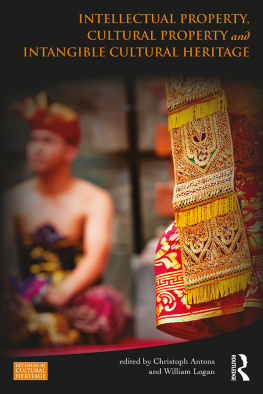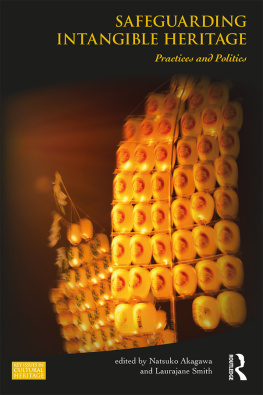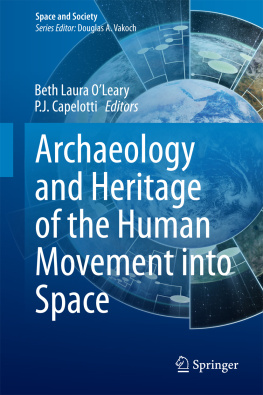Legacies of Space and Intangible Heritage
Legacies of Space and Intangible Heritage
Archaeology, Ethnohistory, and the Politics of Cultural Continuity in the Americas
Edited by
Fernando Armstrong-Fumero and Julio Hoil Gutierrez
University Press of Colorado
Boulder
2017 by University Press of Colorado
Published by University Press of Colorado
5589 Arapahoe Avenue, Suite 206C
Boulder, Colorado 80303
All rights reserved
Printed in the United States of America

The University Press of Colorado is a proud member of The Association of American University Presses.
The University Press of Colorado is a cooperative publishing enterprise supported, in part, by Adams State University, Colorado State University, Fort Lewis College, Metropolitan State University of Denver, Regis University, University of Colorado, University of Northern Colorado, Utah State University, and Western State Colorado University.
This paper meets the requirements of the ANSI /NISO Z39.48-1992 (Permanence of Paper).
ISBN : 978-1-60732-571-0 (cloth)
ISBN : 978-1-60732-659-5 (paperback)
ISBN : 978-1-60732-572-7 (ebook)
Library of Congress Cataloging-in-Publication Data
Names: Armstrong-Fumero, Fernando, editor. | Hoil Gutierrez, Julio, editor.
Title: Legacies of space and intangible heritage : archaeology, ethnohistory, and the politics of cultural continuity in the Americas / edited by Fernando Armstrong-Fumero and Julio Hoil Gutierrez.
Description: Boulder : University Press of Colorado, [2017] | Includes bibliographical references and index.
Identifiers: LCCN 2016056647| ISBN 9781607325710 (cloth) | ISBN 9781607326595 (pbk) | ISBN 9781607325727 (ebook)
Subjects: LCS H: Cultural landscapesAmericaCase studies. | Cultural propertyProtection AmericaCase studies. | Cultural propertyAmericaManagementCase studies. | Historic sitesConservation and restorationAmericaCase studies. | Historic sitesAmerica ManagementCase studies.
Classification: LCC GF 500 .L44 2017 | DDC 973dc23
LC record available at https://lccn.loc.gov/2016056647

An electronic version of this book is freely available, thanks to the support of libraries working with Knowledge Unlatched. KU is a collaborative initiative designed to make high-quality books open access for the public good. The open access ISBN for the PDF version of this book is 978-1-60732-700-4; for the ePUB version the open access ISBN is 978-1- 60732-720-2. More information about the initiative and links to the open-access version can be found at www.knowledgeunlatched.org.
Front-cover photographs: Taperinha Plantation (top), Cavern of the Painted Rock, Monte Alegre (bottom), courtesy of Anna C . Roosevelt.
Contents
Fernando Armstrong-Fumero and Julio Hoil Gutierrez
Fernando Armstrong-Fumero and Julio Hoil Gutierrez
Maren P. Hopkins, Stuart B. Koyiyumptewa, Saul L. Hedquist, T. J. Ferguson, and Chip Colwell
Christine Kray, Minette Church, and Jason Yaeger
Bonnie Clark
Keiko Yoneda (translated by Hannah Becker)
Rani T. Alexander
Emiliana Cruz
Winifred Creamer, Jonathan Haas, and Henry Marcelo Castillo
Anna C. Roosevelt
Tables
8.8. Tones
8.9. Place-names
Legacies of Space and Intangible Heritage
Introduction
Fernando Armstrong-Fumero and Julio Hoil Gutierrez
Whether on the scale of a household, of a community, or of a much larger regional environment, spaces of human habitation are both historical records of our past and a key element in reproducing the knowledge and values that define our lives in the present. This process of cultural reproduction can be endangered when migration, displacement, or changes in property regimes limit communities access to sites where they have important historical connections. Around the world, formal legal statutes, grassroots organizations, and local acts of resistance can play different roles in reasserting these connections between people and place. Accordingly, the claims that contemporary stakeholders make on archaeological sites and related landscape features extend beyond the simple desire for conservation or site preservation and include the rights to visit, inhabit, and even alter the physical composition of these spaces.
The essays in this volume are an interdisciplinary exploration of these intersections between the study and management of physical sites and the reproduction of intangible cultural legacies. Some chapters focus on more abstract theoretical insights into societies relationship to different places and how this relationship figures in the reproduction of cultural continuities amidst processes of social change. Other essays turn to more pragmatic ways in which these insights figure in contemporary negotiations through which different groups seek greater access or control over culturally significant sites and landscapes. As a group, they are meant to provide a comparative body of case studies that explore the different ways in which place is mediated by social, political, and ecological processes that have deep historical roots and that continue to effect the politics of heritage management today.
The close relationship between physical space and more ephemeral manifestations of culture and social organization are a common thread joining diverse currents of anthropological and archaeological research. Since the rise of New Archaeology in the 1960s and 1970s, archaeological research has focused on reconstructing long-term patterns of culture and social structure. Working up from the material traces of human behavior, the processualists and their various intellectual successors and competitors have been keenly attuned to the intimate and dynamic relationship between the materiality of space and the more intangible dimensions of human behavior and experience. In cultural and linguistic anthropology, a number of theoretical currencies that focus on the intersections of space and culture gained prominence in the 1990s and 2000s. These range from studies of the spatialization of collective memory that were inspired by the work of Pierre Nor (1989) , to linguistic analyses of the intimate relationship between patterns of reference and the social organization of space ( Hanks 1990 ), to studies of environment that focus on the intimate ties between evolving ecosystems and patterns of settlement and subsistence ( Ford and Nigh 2015 ; Gordillo 2004 ; Wright 2014 ).
Many of the theoretical currencies that we listed above figure in the essays in this volume. But the case studies presented here are also joined by an overarching concern for stakeholders access to culturally significant spaces. Accessibility becomes a question of crossing boundaries that are defined by regimes of private property, heritage legislation, and the eminent domain of modern nation-states. In this regard, these essays touch upon questions of spatial justice that figure in the tradition of cultural geography associated with Henri Lefebvre (1992) , and later Anglophone authors such as David Harvey (1996) and Edward Soja (2011) . These authors adapted the dialectical analysis of Western Marxism to explore the dynamic historical relationship between space and the social organization of human labor. Space was never simply an inert material template on which human social processes were enacted but was also a







 The University Press of Colorado is a proud member of The Association of American University Presses.
The University Press of Colorado is a proud member of The Association of American University Presses. An electronic version of this book is freely available, thanks to the support of libraries working with Knowledge Unlatched. KU is a collaborative initiative designed to make high-quality books open access for the public good. The open access ISBN for the PDF version of this book is 978-1-60732-700-4; for the ePUB version the open access ISBN is 978-1- 60732-720-2. More information about the initiative and links to the open-access version can be found at www.knowledgeunlatched.org.
An electronic version of this book is freely available, thanks to the support of libraries working with Knowledge Unlatched. KU is a collaborative initiative designed to make high-quality books open access for the public good. The open access ISBN for the PDF version of this book is 978-1-60732-700-4; for the ePUB version the open access ISBN is 978-1- 60732-720-2. More information about the initiative and links to the open-access version can be found at www.knowledgeunlatched.org.